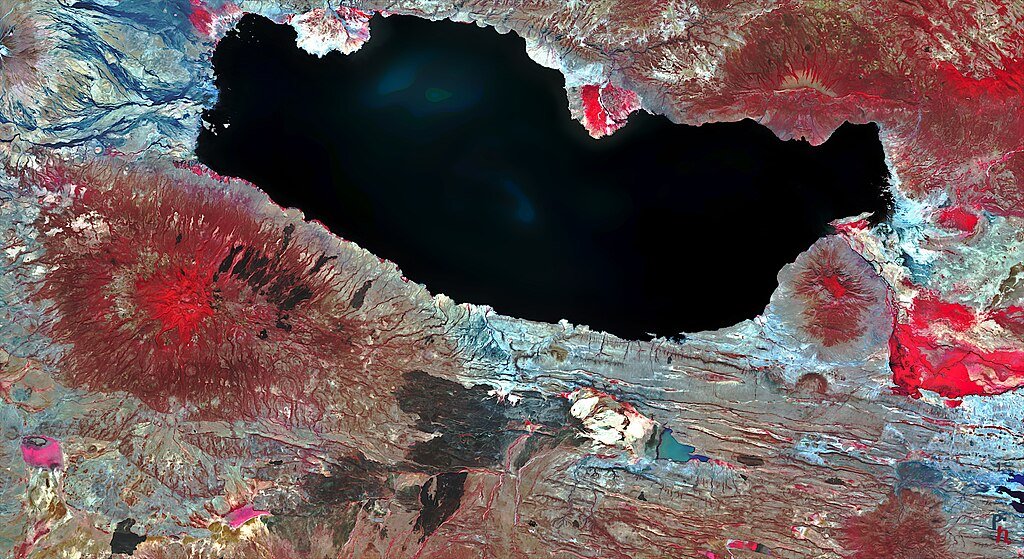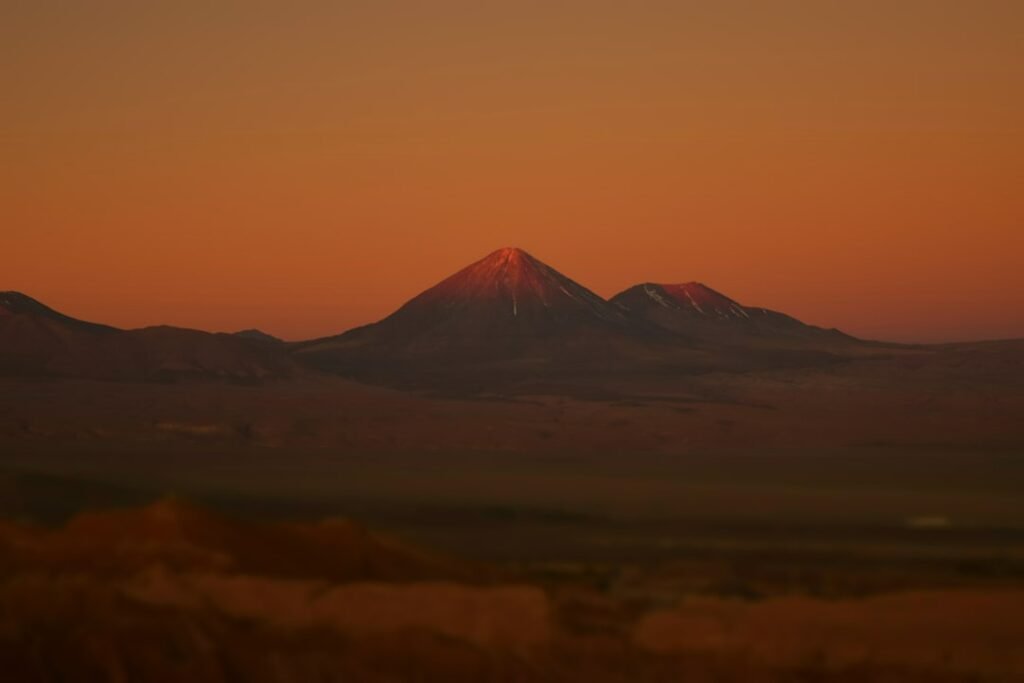In the middle of Tanzania’s arid north sits a lake so hostile that it mummifies species unfortunate enough to come into touch. One of the most extreme environments on Earth, Lake Natron’s blood-red color and caustic chemistry allow flamingos to flourish but most animals choose “stone.” How does this dreamlike phenomena occur? The solution resides in a deadly mix of volcanic minerals, extreme heat, and a pH so high it competes with home bleach.
A Lake of Fire and Salt: The Geology Behind Natron’s Deadly Waters
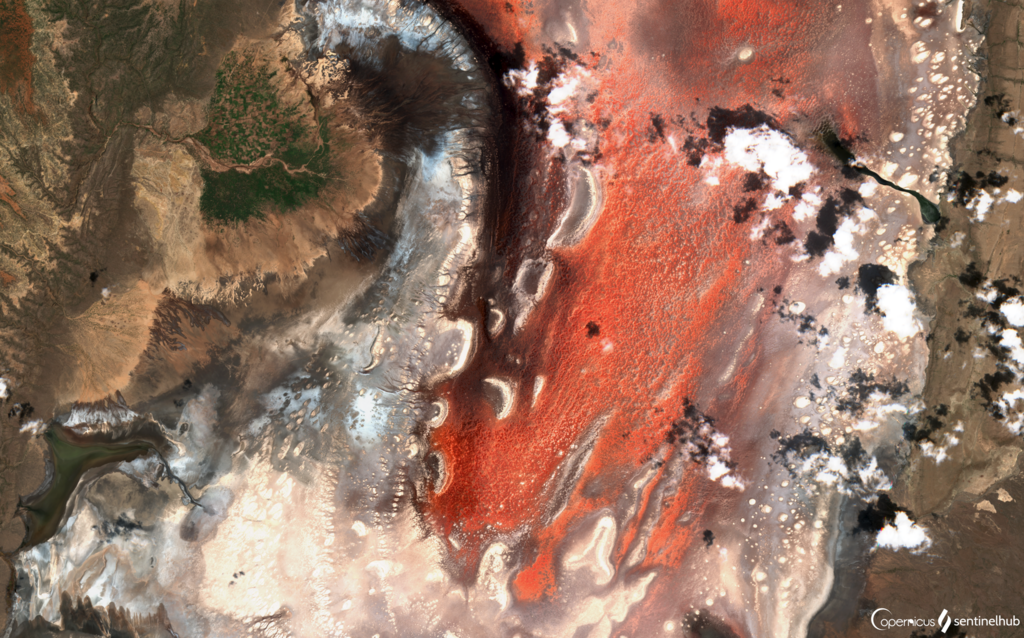
In the East African Rift, Lake Natron lies where tectonic forces are gradually separating the continent. Once used for mummification, this volcanic activity pumps the lake loaded with sodium carbonate and calcium carbonate minerals once used by ancient Egypt. These chemicals gather without a channel to the sea, producing water so alkaline (pH 10.5) that it can burn skin and blind animals trying to drink it.
Extreme salinity of the lake results from hot springs and mineral-rich runoff from nearby hills. Unlike most lakes, Natron doesn’t dilute; rather, it gets stronger and naturally preservative for everything that dies in it.
The Petrification Effect: How Lake Natron “Turns Animals to Stone”
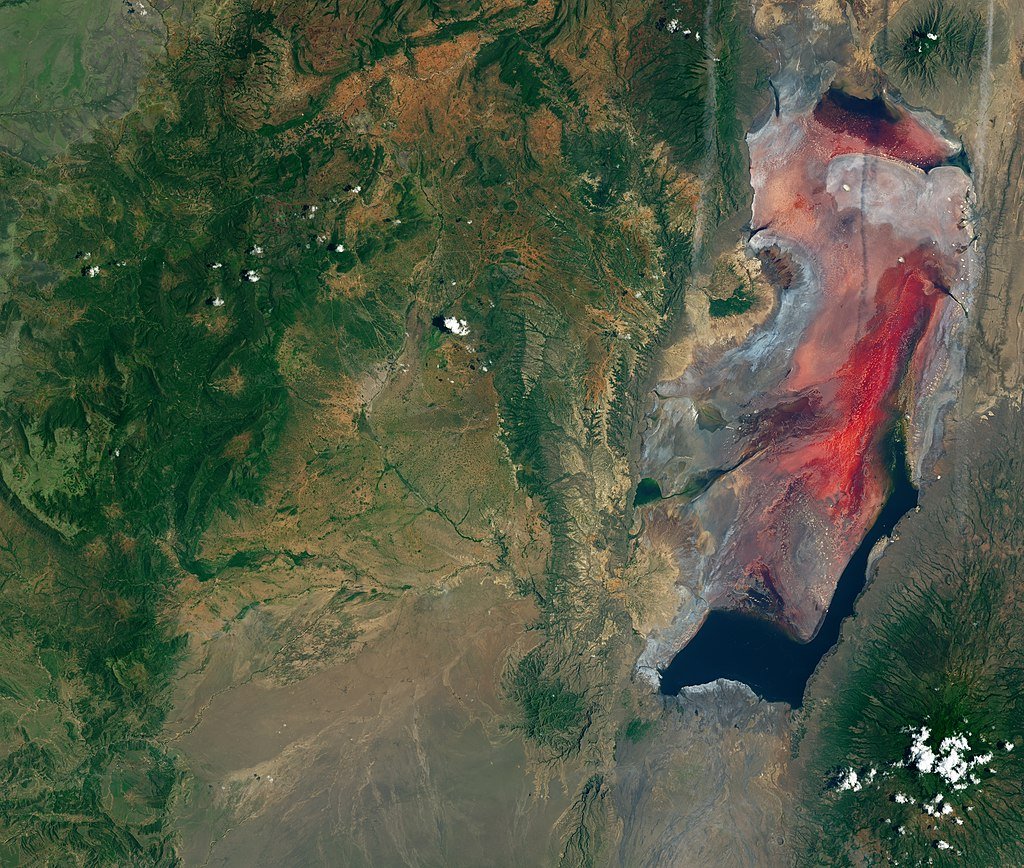
Photographer Nick Brandt caught spooky pictures of calcified birds and bats along Natron’s coast in 2013, their bodies remarkably preserved like statues. Unlike legend, the lake does not immediately turn life into stone. Rather, the high sodium carbonate concentration causes tissues to lose moisture and over time covers them with a hard, mineral shell.
Scientists believe these animals may die from confusion. The lake’s mirror-like surface, caused by salt crusts, can disorient birds, causing fatal mid-flight collisions. Others may succumb after drinking the toxic water, their bodies later washing ashore, where salts crystallize around them.
Flamingos’ Fortress: The Paradox of Life in a Death Trap
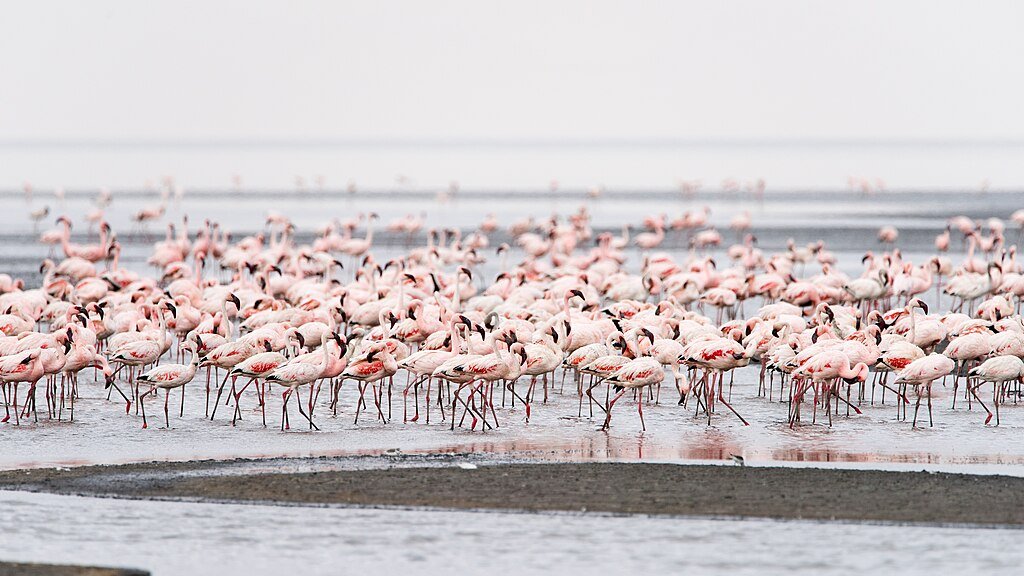
Despite its lethality, Lake Natron is the world’s most critical breeding ground for lesser flamingos. Roughly 75% of the global population (1.5–2.5 million birds) hatch here, shielded from predators by the lake’s inhospitable waters.
These flamingos survive thanks to evolutionary armor:
- Tough-skinned legs resistant to burns.
- Specialized glands that filter salt from their blood.
- A diet of cyanobacteria, the very algae that turns the lake red.
Without Natron, the species could face extinction. Yet, soda ash mining and climate change threaten this fragile sanctuary.
The Blood-Red Mystery: Why Is the Lake Such a Vibrant Color?
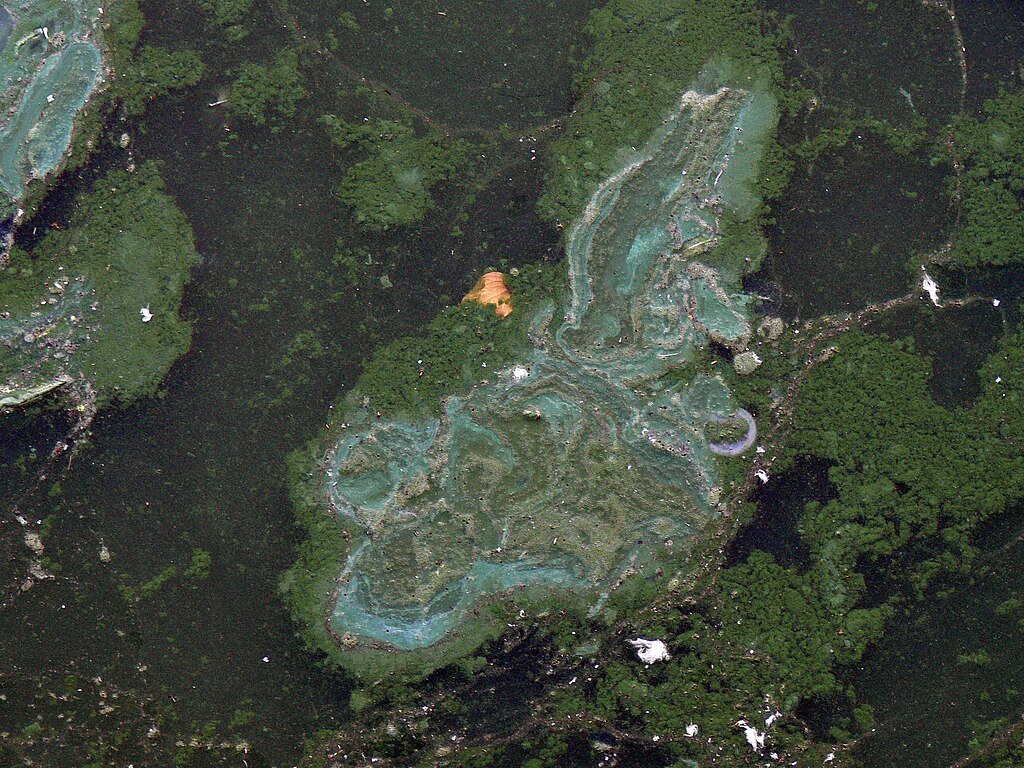
Salt-loving microorganisms haloarchaea and cyanobacteria, which survive in Natron’s toxic waters, give her arresting red color. These creatures naturally create red pigments to act as sunscreen against African sunlight.
Evaporation concentrates the salts in the lake, giving it a deeper red color during dry seasons. Ironically, the same bacteria that color the lake also feed the flamingos, tying Natron’s beauty directly to its lethal nature.
Scalding Temperatures: A Lake That Boils From Below
Natron is blazing hot, not only chemically extreme. Just 0.5 meters in places, shallow depths let sunlight heat the water to 60°C (140°F). For most animals, this combined with the alkaline burn poses a double deadly threat.
The scale of the lake swings greatly:
- Dilutes somewhat and grows during rain.
- Shrinks in a drought become even more focused.
A Fragile Ecosystem Under Threat
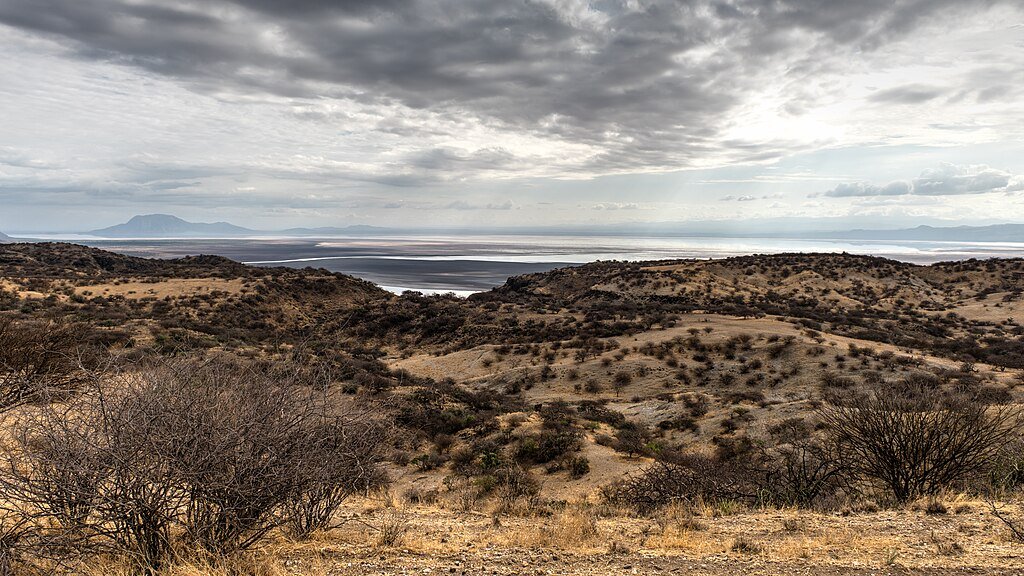
Although apparently unbreakable, Lake Natron is vulnerable to human activity:
- Plans for soda ash mining could cause problems for flamingo reproduction.
- Rainfall patterns may be changed by climate change, so upsetting water levels.
- Unchecked, tourism could upset its delicate equilibrium.
Conservationists contend that Natron is a natural beauty where life and death coexist in strange harmony, not only a scientific wonder.
Conclusion: Nature’s Most Bizarre Preservation Lab

A living paradox, Lake Natron is a toxic pool that generates rich ecosystems yet also a place of death that preserves life. Its petrifying waves serve as a sobering reminder of Earth’s extremes where chemistry, geology, and biology interact in one of the most hauntingly beautiful settings on the planet.
For now, the lake stays a flamingo haven and a natural morgue, a silent observer of the fine line separating survival from extinction. The length of the inquiry is unknown.
Sources:

Suhail Ahmed is a passionate digital professional and nature enthusiast with over 8 years of experience in content strategy, SEO, web development, and digital operations. Alongside his freelance journey, Suhail actively contributes to nature and wildlife platforms like Discover Wildlife, where he channels his curiosity for the planet into engaging, educational storytelling.
With a strong background in managing digital ecosystems — from ecommerce stores and WordPress websites to social media and automation — Suhail merges technical precision with creative insight. His content reflects a rare balance: SEO-friendly yet deeply human, data-informed yet emotionally resonant.
Driven by a love for discovery and storytelling, Suhail believes in using digital platforms to amplify causes that matter — especially those protecting Earth’s biodiversity and inspiring sustainable living. Whether he’s managing online projects or crafting wildlife content, his goal remains the same: to inform, inspire, and leave a positive digital footprint.

